Monkeys exude an undeniable charm that can make even the most hardened hearts melt a little. Those expressive eyes, nimble fingers, and playful antics pull us in, hinting at a world of mischievous intelligence. But behind all that cuteness lies a reality that often goes unseen – some of these adorable creatures can be surprisingly dangerous. Our fascination with primates has led us to underestimate the risks they pose, both in the wild and in more domestic settings. It’s easy to forget that these seemingly harmless animals are still wild at heart, equipped with instincts and abilities that can catch us off guard.
As we journey through this list of 13 fascinating yet formidable monkeys, remember that appearances can be deceiving. Each of these species carries its own unique charm, yet they also harbor traits that can spell danger for the unprepared. So, let’s dive into this intriguing world where cute meets caution, and discover the unexpected challenges that come with these captivating creatures.
1. Capuchin Monkeys: The Unexpected Tricksters
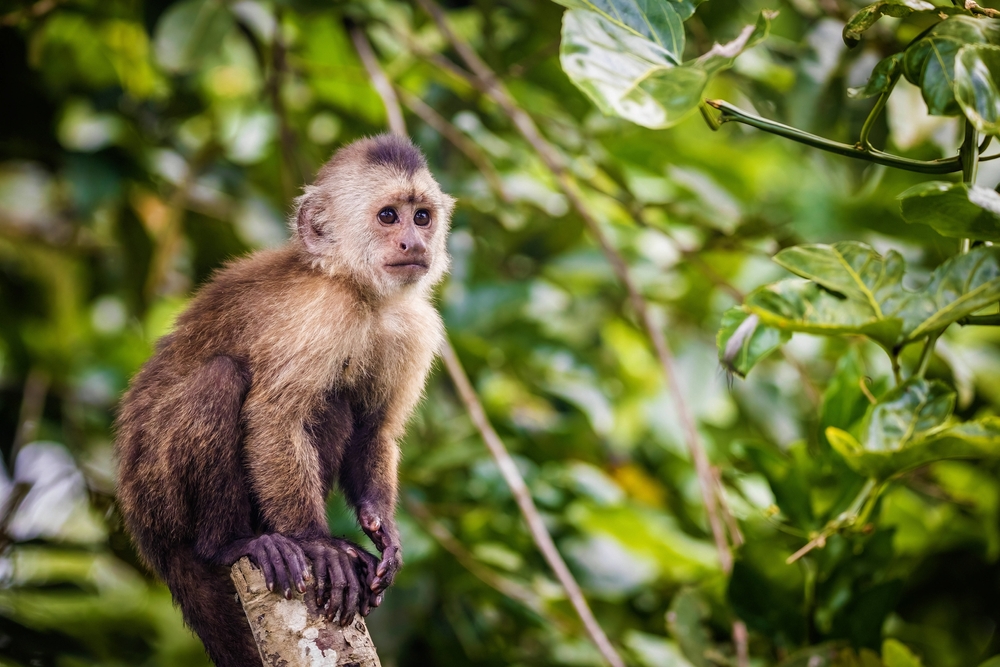
Capuchin monkeys are often portrayed as clever little companions or adorable pets in movies and television. Their intelligence is undeniable, making them popular in the entertainment industry and among exotic pet enthusiasts. Yet, with intelligence comes a degree of unpredictability. Capuchins are notorious for their mischievous behavior, which can escalate into more aggressive actions if they feel threatened or confined. Their sharp teeth and strong jaws mean they can inflict serious injuries, contrary to their small size and cute demeanor.
When encountering humans, Capuchins might explore a little too enthusiastically, grabbing at anything shiny or edible. They are known to be territorial, which makes them defensive around unfamiliar people or animals. While they may seem like fascinating companions, owning one comes with significant responsibility and risk. The uninitiated might find themselves on the receiving end of a territorial display or a playful bite that goes too far. It’s crucial to remember that even the smartest monkeys have wild instincts that can lead to dangerous situations.
2. Chimpanzees: The Gentle Giants with a Dark Side
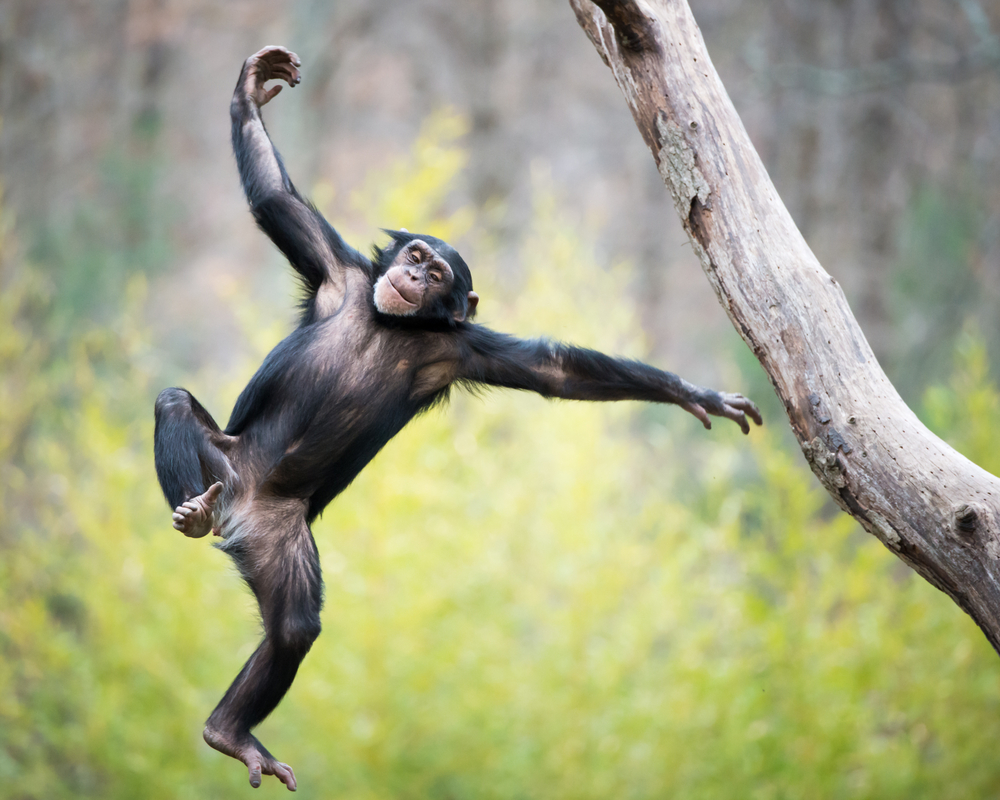
Chimpanzees are incredibly close to humans, sharing nearly 99% of our DNA, which makes them endlessly fascinating. Their social structures, use of tools, and emotional depth make them seem almost human-like. But this familiarity can be misleading. Chimpanzees are powerful animals capable of intense aggression, particularly when they feel threatened or challenged. A fully grown chimpanzee can be stronger than a human adult and can cause severe harm if provoked.
Their social dynamics are complex, and disputes within a troop can lead to violence, sometimes directed towards humans who inadvertently get in the way. In captivity, chimps may seem docile and friendly, but their natural instincts remain, and they can become unpredictable. Even those raised by humans retain their strength and territorial instincts, which can manifest in startlingly aggressive behavior. Their intelligence and curiosity, while captivating, make them a species best respected from a distance.
3. Rhesus Macaques: The Bold Urban Dwellers
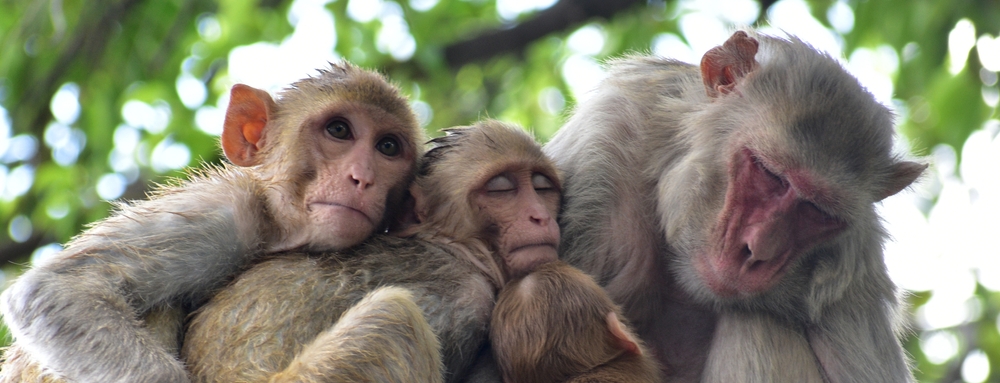
Rhesus macaques have adapted remarkably well to urban environments, often seen in bustling cities and towns across Asia. Their boldness is part of their charm, as they navigate human environments with the dexterity and confidence of seasoned city dwellers. But this familiarity with humans has a downside. Rhesus macaques can become aggressive when they feel their space is being invaded or their food sources threatened. In areas where they are fed by people, their behavior can shift from curious to demanding.
Their boldness means they are not afraid to approach people directly, and they can become hostile if they perceive any threat or opportunity for food. This can lead to confrontations, and the risk of bites and scratches is real and potentially dangerous. Additionally, they can carry diseases transmissible to humans, such as the herpes B virus. While their antics can be amusing and endearing, it’s essential to maintain a respectful distance and avoid encouraging their dependence on humans.
4. Mandrills: The Colorful Yet Cautionary Tale
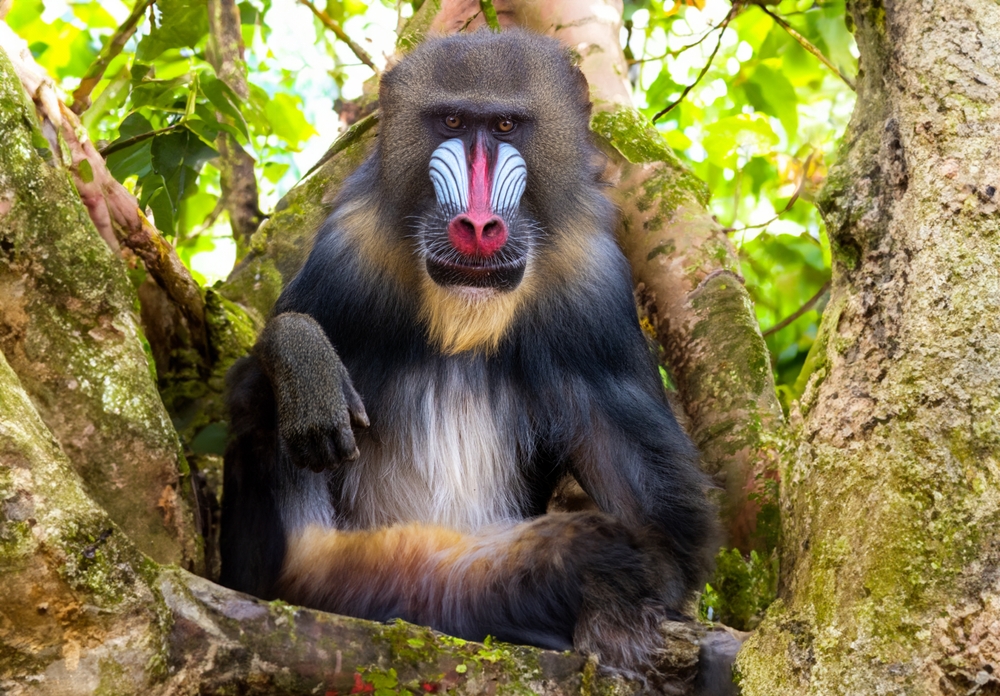
Mandrills are the world’s largest monkeys, and their vibrant colors make them stand out in any setting. Their striking blue and red facial features, combined with their impressive size, make them unforgettable. However, these spectacular creatures are not just about appearances. Mandrills can be highly territorial and exhibit aggressive behavior when they feel threatened. With their sharp canines and powerful build, an angry mandrill can be a formidable adversary.
Their social structure is intricate, with dominant males leading large groups, which can lead to intense competition and displays of aggression. In captivity, mandrills’ size and strength can pose significant challenges in terms of safety and management. While they might appear calm and collected, a stressed or provoked mandrill can react swiftly and violently. Interacting with these majestic animals requires caution, respect, and an understanding of their complex social behaviors.
5. Baboon: The Fearsome Family Members
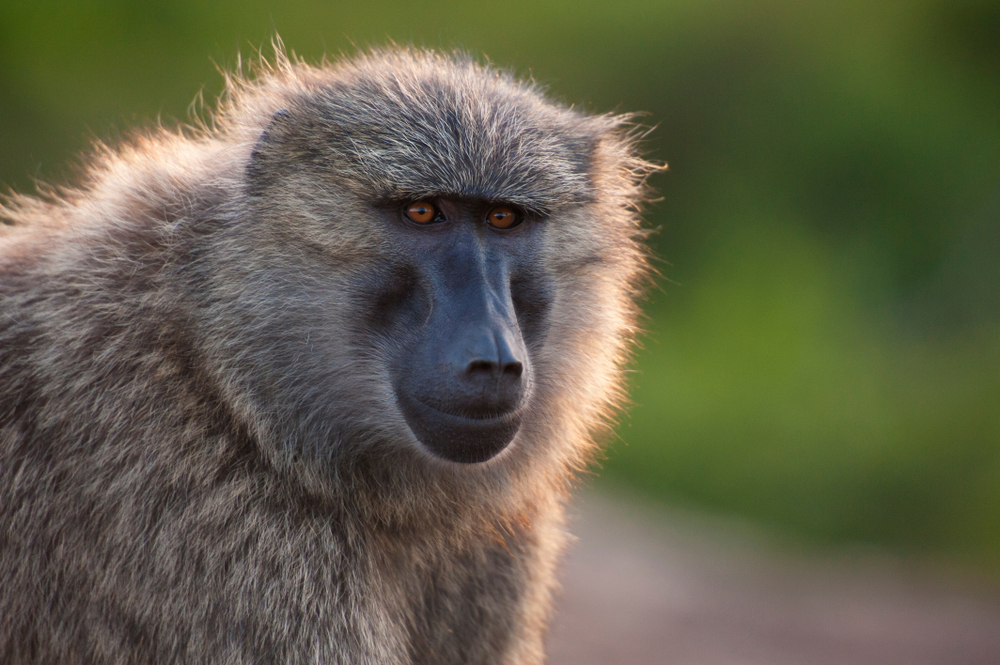
Baboons are among the most social primates, living in large troops with complex hierarchies and relationships. Their communal lifestyle is fascinating to observe, with intricate grooming rituals and cooperative behaviors. However, this tightly-knit social structure also means that baboons can be fiercely protective and aggressive towards outsiders. They have powerful jaws and sharp teeth, making them capable of severe injury if they feel their troop is in danger.
Their size and strength make them a force to be reckoned with, particularly when they perceive a threat to their young or territory. Baboons are also opportunistic feeders, and their interactions with humans often involve conflicts over food. In areas where humans encroach on their habitat, baboons can become bold, raiding crops and even entering homes in search of food. Their intelligence and adaptability mean that they can be formidable opponents in any encounter.
6. Snow Monkeys: The Icy Elites
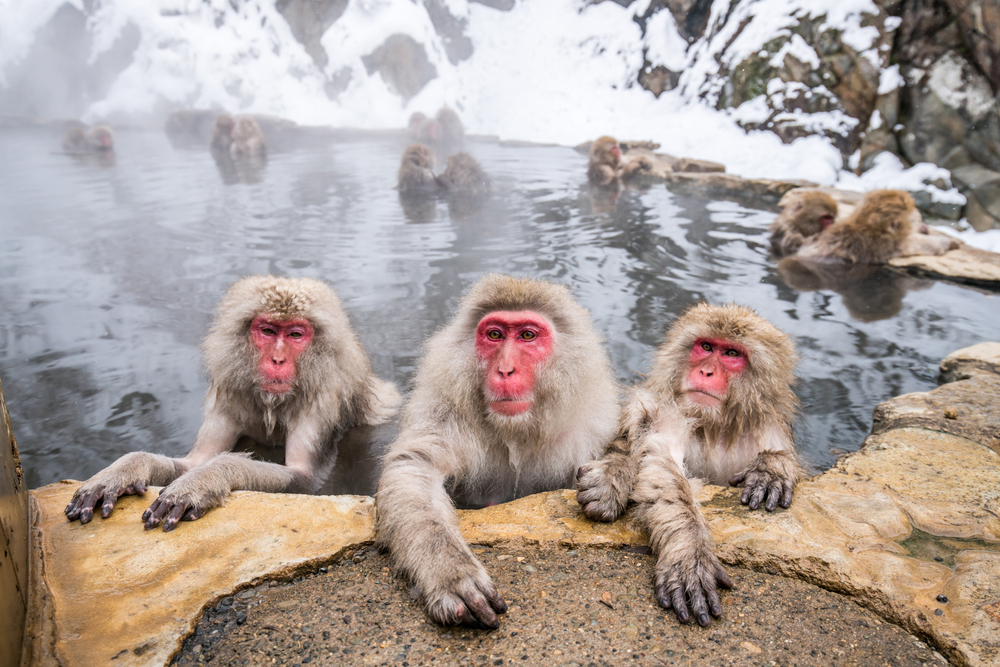
Snow monkeys, or Japanese macaques, are well-known for their striking images bathing in hot springs amidst snowy landscapes. Their serene and relaxed demeanor in these settings belies a more complex social and aggressive nature. In their natural habitat, snow monkeys establish clear hierarchies and can be quite territorial and aggressive, particularly during mating season. Conflicts within their groups can become violent, and they can be quick to defend their territory against perceived intruders.
Their adaptability to harsh environments has made them resilient and resourceful, qualities that serve them well but can also lead to aggressive behaviors. In tourist-heavy areas, interactions with humans can become problematic, particularly when food is involved. While they may appear calm and approachable, it’s crucial to remember that they are still wild animals with instincts to protect themselves and their group. Respectful observation from a distance is the best approach to appreciating these majestic creatures without inciting aggression.
7. Proboscis Monkeys: The Nose Knows
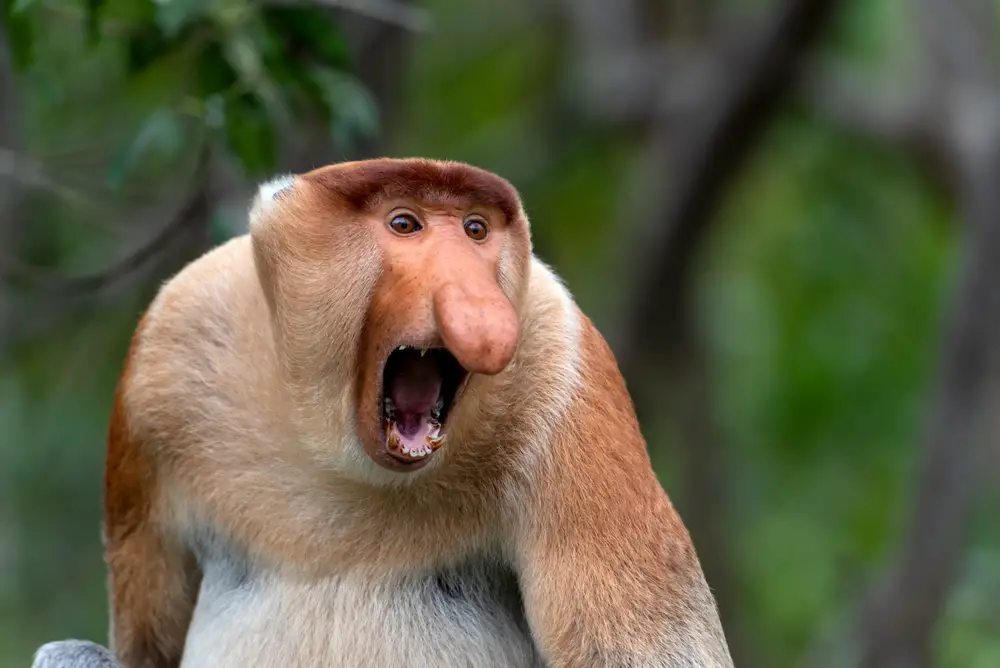
Proboscis monkeys are instantly recognizable due to their large, distinctive noses, which give them a unique and somewhat comical appearance. Their quirky looks often steal the show, but there’s more to these monkeys than just their appearance. While they are generally shy and reserved, proboscis monkeys can become aggressive if they feel threatened or cornered. Their powerful build and sharp teeth make them more dangerous than their humorous looks might suggest.
These monkeys are excellent swimmers, often found near rivers and using water as an escape route from perceived threats. Their social groups are tightly knit, and males can be particularly defensive of their harems. Interactions with humans can lead to stress and aggression, particularly if their habitat is encroached upon. Although they are not typically aggressive towards humans, it’s essential to respect their space and observe them in a way that does not disrupt their natural behavior.
8. Howler Monkeys: The Loud Protectors
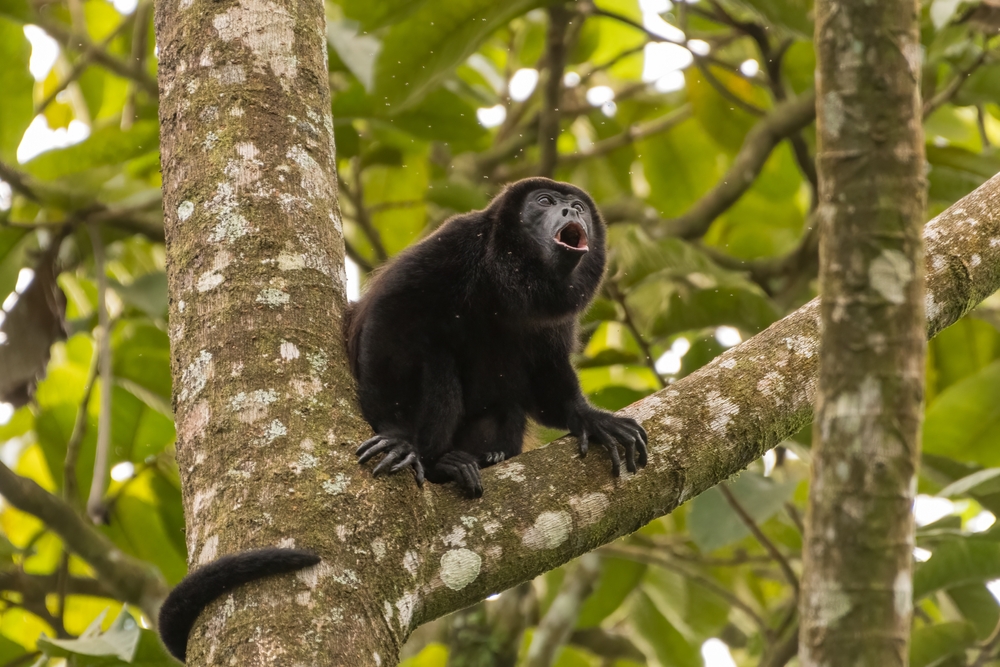
Howler monkeys are famous for their vocalizations, which can be heard up to three miles away through dense forest. Their iconic howls serve as territorial calls, warning other groups to keep their distance. While howler monkeys are generally not aggressive towards humans, their vocal prowess is a reminder of their territorial nature. If they feel threatened or cornered, they can become aggressive, using their strong limbs and sharp teeth to defend themselves.
Their social structure involves clear hierarchies, and disputes within a group can become physical. In their natural habitat, they play a crucial role in maintaining the ecological balance, but this also means they are protective of their territory. When humans encroach on their environment, howler monkeys can become stressed and react defensively. Enjoying their vocal performances from a respectful distance ensures safety for both the monkeys and observers.
9. Spider Monkeys: The Agile Acrobats
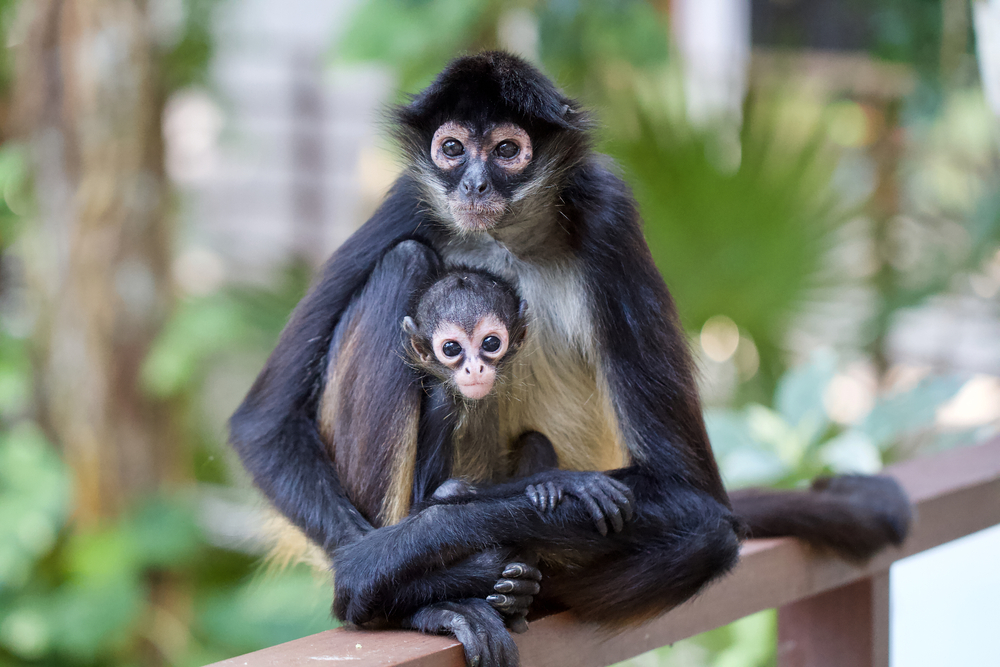
Spider monkeys captivate with their incredible agility and long limbs, effortlessly swinging through the trees with ease and grace. Their acrobatic skills make them fascinating to watch, but also serve as a reminder of their strength and adaptability. While spider monkeys are generally not aggressive, they can become defensive if they feel threatened or if their habitat is disturbed. Their sharp teeth and strong limbs can cause harm if they choose to defend themselves.
Living in complex social groups, spider monkeys communicate with a variety of vocalizations and physical gestures. This social complexity can lead to disputes, and stress from outside disturbances can heighten tensions. In areas where their habitat overlaps with human activity, conflicts can arise, particularly if food is involved. It’s important to respect their space and observe them in a way that does not provoke stress or aggression.
10. Squirrel Monkeys: The Tiny Titans
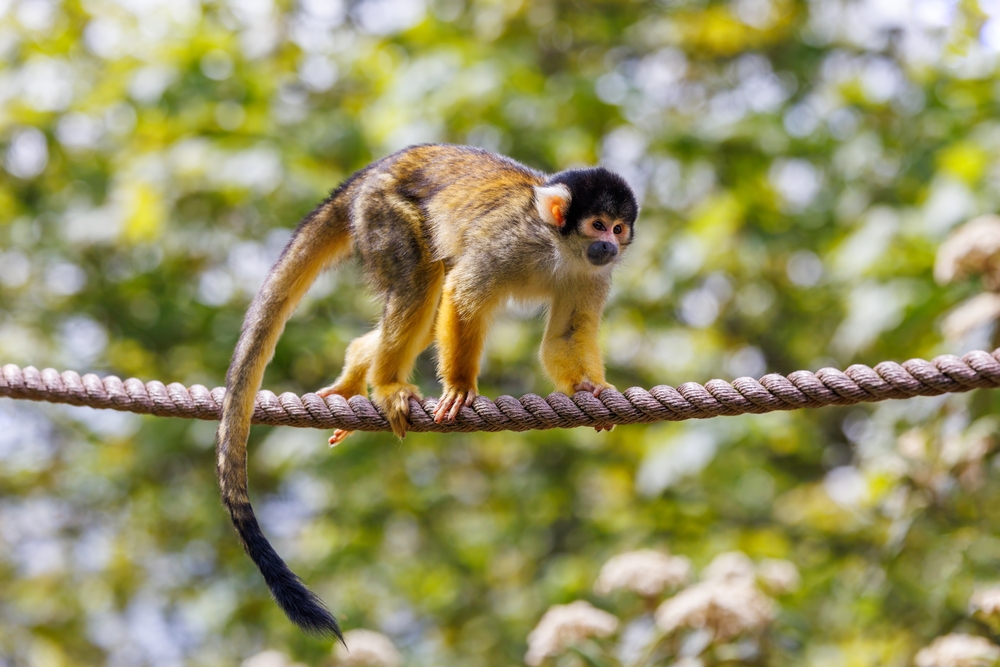
Squirrel monkeys are small but mighty, their diminutive size belying a feisty nature and agile movements. Their social nature and playful antics make them endearing, but it’s important not to underestimate them. In the wild, they live in large groups with complex social structures that can lead to aggressive interactions. While they are not typically aggressive towards humans, their sharp teeth and quick reflexes make them capable of defending themselves if necessary.
Interactions with humans can lead to stress and defensive behavior, particularly if they feel cornered or their territory is invaded. Squirrel monkeys are highly intelligent and curious, which can lead them to explore human belongings or food. This curiosity, while amusing, can also lead to conflict if they perceive a threat. Observing their playful behavior from a respectful distance ensures the safety and well-being of both monkeys and humans.
11. Patas Monkeys: The Swift Runners
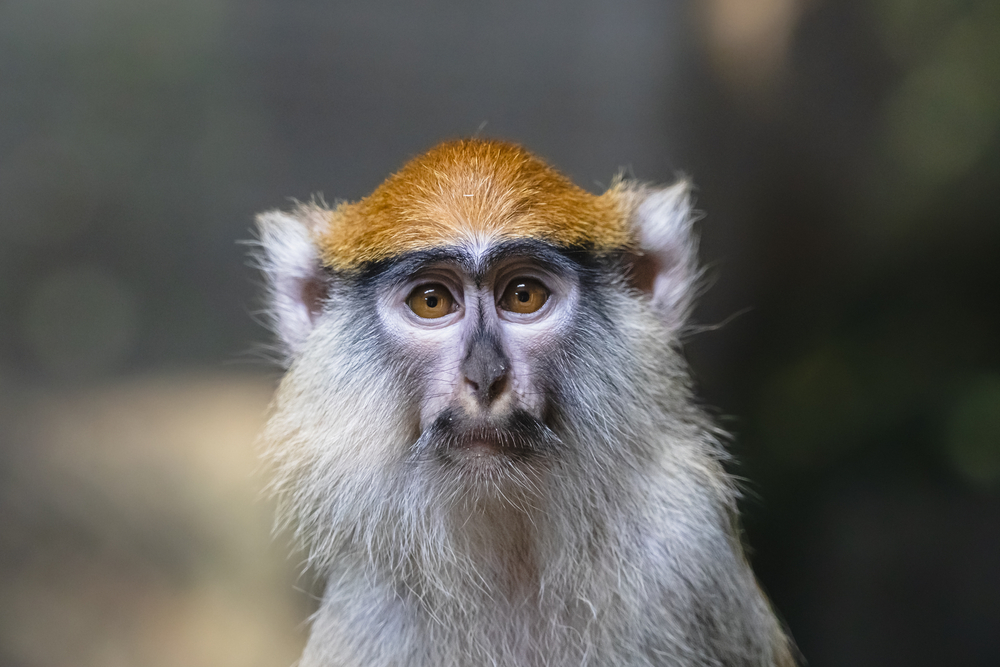
Patas monkeys are known for their incredible speed, making them the fastest runners among primates. Their impressive agility allows them to escape predators and navigate their savannah habitats with ease. While generally shy, patas monkeys can become aggressive if they feel threatened or if their group is disturbed. They have strong limbs and sharp teeth that can cause significant injury if they choose to defend themselves.
Their social structure involves small groups, often with a single male leading a group of females. This dynamic can lead to aggressive interactions, particularly during mating season or if a rival male challenges the leader. In areas where their habitat overlaps with human activity, interactions can become problematic, particularly if food is involved. Observing their swift movements and unique behaviors from a safe distance is the best way to appreciate these fascinating creatures.
12. Vervet Monkeys: The Clever Confrontationalists
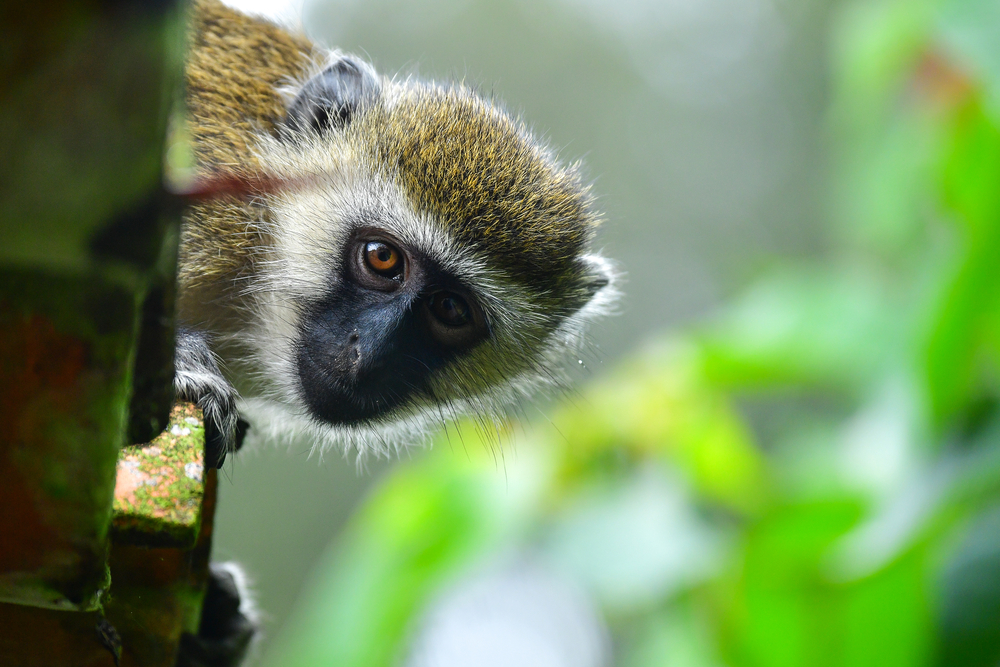
Vervet monkeys are highly intelligent and adaptable, often found in a variety of habitats, from savannas to suburban areas. Their clever nature allows them to exploit new environments, but also brings them into conflict with humans. While not typically aggressive, vervet monkeys can become confrontational if they feel threatened or if their territory is encroached upon. Their sharp teeth and quick reflexes make them capable of defending themselves effectively.
In human-populated areas, vervet monkeys can become bold and opportunistic, often raiding crops or human dwellings for food. This behavior, while resourceful, can lead to conflict and potentially dangerous interactions. Their social structure involves clear hierarchies and complex communication, which can lead to aggressive interactions within a group. Respectful observation and understanding of their behavior are essential to avoiding negative encounters with these intelligent monkeys.
13. Geladas: The Gripping Grazers
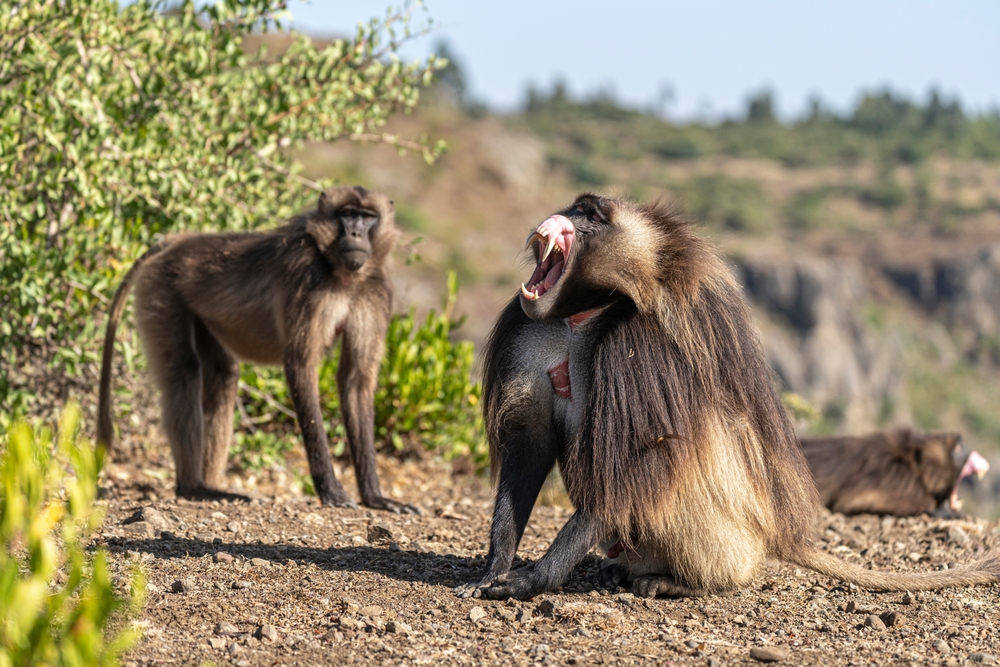
Geladas are unique among primates, primarily grazing on grass in the highlands of Ethiopia. Their striking appearance, with elaborate manes and expressive faces, makes them fascinating to observe. While generally peaceful grazers, geladas can become aggressive if they feel their group is threatened or if there are disputes within their social structure. Their sharp canines and strong limbs make them capable of defending themselves if necessary.
Living in large groups, geladas exhibit complex social interactions that can sometimes lead to violent conflicts. In areas where humans encroach on their habitat, interactions can become problematic, particularly if food sources are threatened. While they are not typically aggressive towards humans, it’s essential to respect their space and observe them in a way that does not disrupt their natural behavior. Appreciating their unique lifestyle and social structure from a safe distance ensures the safety and well-being of both geladas and observers.
